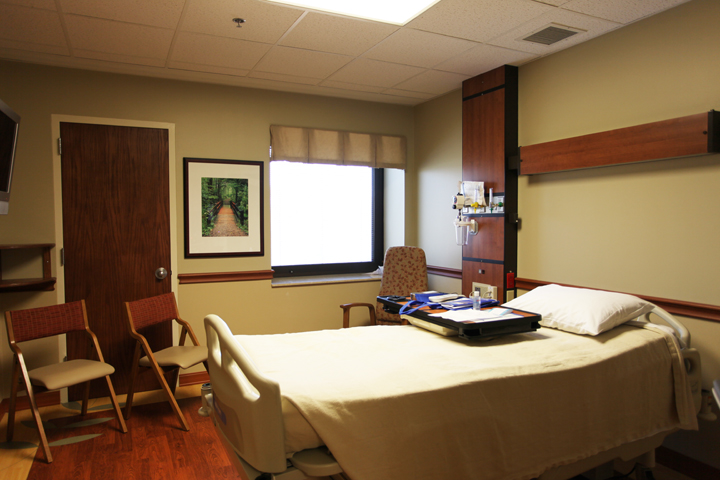Art Cart
Excerpts from: Healthcare Design Online/ August 31, 2007 by Upali Nanda, PHD, Kathy Hathorn, MA, & Tali Neumann, RN, M
When people who are ill view and/or make art, their attitude and outlook change. When people are relaxed, it allows the immune system to operate optimally.
The Art Cart, at no cost to patients, offers a choice of fine art reproductions and popular posters for patient rooms that provide diversion, comfort, and aesthetic enjoyment. Having the opportunity to choose art for their room gives patients some control over their surroundings, giving them a sense of empowerment as well as creating a more personal environment. The interaction with a concerned volunteer has also proven to be a welcome form of socializing for patients.
There is a growing body of evidence arguing for the role of art in healing with both scientific studies and anecdotal references backing the argument. Scientific studies have focused primarily on health outcomes—the measure of a patient’s condition or progress, or indicator of healthcare quality. These outcomes can be broadly classified into three categories.
- Clinical indicators, such as length of hospital stay, blood pressure, and other observable signs and symptoms relating to patients’ conditions. For example, ceiling-mounted pictures shown to highly stressed, pre-surgical patients on gurneys resulted in lower blood pressure when the images were of serene nature scenes.
- Patient/staff/family-based outcomes, such as patient ratings of perceived pain, satisfaction, or staff-reported satisfaction with working conditions. For example, adult patients in a procedure room reported better pain control when exposed to a nature scene with nature sound in the ceiling.
- Economic outcomes, such as cost of patient care, staff turnover, and economic impact. For example, in a study with gallbladder surgery patients spanning eight years, it was found that patients with a view of nature had lower lengths of stay and lower intake of analgesics than those viewing a brick wall; this argues for a distinct economic benefit. While the economic outcome has been established with “views”, it is yet to be established with artwork per se. However, it is indicative about the role of “nature” as appropriate content for hospital art.
Based on the amount of evidence in place, the presence of appropriate art in the hospital is becoming an essential component of healing environment design. A prevalent but minimally documented means of getting art to the patient areas, especially the patient rooms, is the Art-Cart Program.
For a PDF version of this Newsletter, Click Here Photos for healing Newsletter #106-Sept.-15



